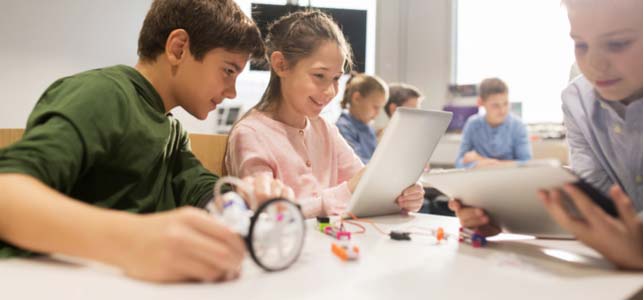A Personalized Learning Backlash
- By Dian Schaffhauser
- 01/09/19

Four-plus years after it was first published, a report on personalized instruction is getting renewed attention as schools in the northeast consider calling their experiments in the instructional model a failure. In his report, "Personalized Instruction: New Interest, Old Rhetoric, Limited Results, and the Need for a New Direction for Computer-Mediated Learning," Noel Enyedy, an associate professor at the University of California Los Angeles Graduate School of Education and Information Studies, suggested that there's "little evidence for the effectiveness" of personalized instruction delivered through technology. The primary reason: The term encompasses so many disparate systems, it's "nearly impossible to make reasonable claims one way or the other." Implementation in the classroom matters, as does how personalized learning is integrated into classroom "routines and structures" and how the computer itself is used in the instructional process.
A recent article by the National Education Policy Center referred to Enyedy's report, which it published, as it examined incidences in which personalized learning experienced what it called a "backlash."
In Brooklyn's Secondary School for Journalism, students walked out of school for an hour last November, to protest the use of Summit Learning, a personalized learning model that uses mentoring, projects and self-direction that includes web-based work. It was designed by educators at Summit Public Schools with help from Facebook engineers and funded by the Chan Zuckerberg Initiative. A company spokeswoman said that CZI is now a long-term engineering partner for the Summit Learning platform.
According to the New York Post, students said the programming forced them "to stare at computers for hours and 'teach ourselves.'" Shortly after, the New York City Department of Education said it would drop use of the Summit program in its grade 11 and 12 classes.
In 2017 several elementary and middle schools in Cheshire, CT adopted the Summit model, including issuance of Chromebooks to every participating student, but within months, according to reporting by the Intelligencer, the implementation "collapsed into a suburban disaster, playing out in school board meetings and, of course, on Facebook." In that district, a task force is still working on the Summit initiative.
Among the problems with Summit, according to the NEPC story, is that students spend too little time with their teachers and too much time staring at screens; there are concerns about how the data generated by the system is being used; software has had glitches, kicking students off for days at a time; and lessons are too easy "to game and trick."
According to Summit, the program is in use in more than 380 schools, reaching 72,000 students. The organization expects to launch a new nonprofit to "lead and operate" the Summit Learning Program to continue "expanding" its impact, particularly in middle schools, kicking off in time for the 2019-2020 school year.
Enyedy offered seven recommendations in his report:
- For policymakers to be "wary of advocacy" that pushes computerized instruction beyond where the research has shown its efficacy;
- For decision-makers and researchers to be specific about the "features of technologies in use," beyond simply using the term "personalized instruction" to describe it;
- For researchers to develop studies that focus on personalized learning in K-12, not college-level use;
- To make sure that the technology-based curriculum being adopted adheres to learning standards;
- For policymakers to promote greater partnering among developers, researchers and educators to identify which systems are most effective;
- For administrators to follow up their technology investments with ample professional development and training on the use of data for teachers; and
- For all stakeholders to stop assuming that personalized instruction "is the only model for computers in the classroom" and to be open to considering other models that use technology as well for learning.
The NEPC article is openly available on the organization's website.
The report by Enyedy is also available on the NEPC website.
About the Author
Dian Schaffhauser is a former senior contributing editor for 1105 Media's education publications THE Journal, Campus Technology and Spaces4Learning.